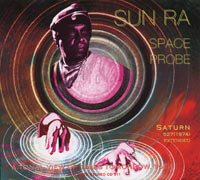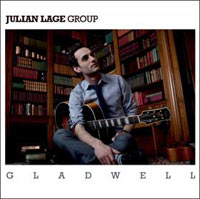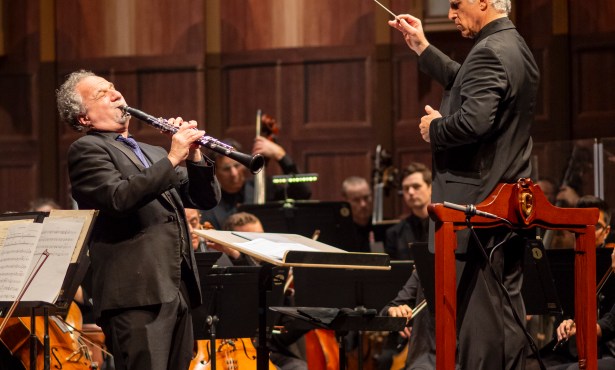Space Was the Place
Sun Ra on Moog and at the Music Academy
PROBE INTO THE PAST/FUTURE: Memory and its stubborn power conjures up impressions of concerts past at the drop of a name. Take Sun Ra. The late, great, avatar jazz musician who professed to hail from Saturn (who are we to judge?) put on a stellar—so to speak—show at the Music Academy of the West back in the late 80s, in the last phase of his remarkably fruitful, fringe-y life (he lived from 1914 to 1993). This magical evening came courtesy of the inspired Jazz and World Music Society, an organization which miraculously made our little tourist town a haven for musicians of the forward-thinking, avant-garde and sometimes Saturn-ite ilk.
We appreciated the Society’s cultural importance while it was happening, just as we can appreciate the legacy in retrospect, while also wondering “whoa, how did that happen out here in this tony western outpost?” In fact, it was thanks to brave situation-makers like Scott Clayton and Eric Larsen and other volunteers who recognized the importance of the operation. How else would we have managed to see, right here in Santa Barbara, the Henry Threadgill Very Very Circus at the Museum of Natural History (one of a handful of great jazz shows in this town, ever), World Saxophone Quartet, Dave Holland Quintet, Episteme at Lotte Lehmann Concert Hall, Mal Waldron at the Unitarian Church, and on and on?
But back to Sun Ra, shaking up the Music Academy. Apart from the structured aspects and unique ensemble weave of his band that night, the concert also offered insight to the keyboardist’s organic iconoclasm as a synthesist and sound-painter who loved to tinker with technology. At that time, the tool in question was the Yamaha DX7, a hot new sensation on the utilitarian digital keyboard front, which crudely supplanted the Rhodes for a minute and allowed users to instantly call up a range of sounds from its factory preset banks. But a few folks, including Don Preston and Sun Ra, found ways to personally tweak the instrument and discover new and expressive timbres and behaviors. What was good for the factory was not good enough for them, as aurally witnessed by Sun Ra’s wild sound palette on the Music Academy’s Miraflores estate that memory-seizing night so long ago.

Sun Ra’s naturally experimental and exploratory tendencies come back to the fore with the recent release of the album Space Probe (ArtYard/ReR), its centerpiece being the 17-minute abstract Moog piece that was the title track of a 1969 album. Here we have a fascinating relic and retroactively fresh-sounding jewel of retro-synthesizer arcana, in which the great Sun Ra takes on the Moog synthesizer, circa the late ‘60s. It’s like a missive from some parallel past, or some parallel universe, just left of Saturn. On earthly terms, the improvisational monophonic analog soundscape allures as an example of electronic music from somewhere between academia and “street level,” with elements of expression traceable to the inimitable artistic mind of this great American maverick.
Sun Ra, one of America’s greatest and earliest self-reliant DIY artists, made things happen with and without the help of an above ground record label. Many reissues and repackagings have come out since his passing, including an important set on the Evidence label, but there are plenty of tasty tidbits left in the archives. The remainder of the new Space Probe release consists of freewheeling, atmospheric outtakes from the early ‘60s albums Secrets of the Sun and When the Sun Comes Out, including some choice morsels of Sun Ra heading intriguingly proto-outside on that earlier keyboard invention, the pianoforte. Suffice to say, Sun Ra is one of those few artists worthy of the compleatist nooks-and-crannies-and-outtakes investigations.
LAGE AT THE LOBERO: Speaking of jazz artists with links to local venues, the fine young—yet already well-entrenched—guitarist Julian Lage has the distinction of being a returning hero at the Lobero Theatre, surely one of God’s gifts to the short list of jazz-friendly spaces on the west coast. Last year, Lage was a nimble and clean-swinging force in Mark O’Connor’s proudly retro Hot Swing band, and on Tuesday, October 11, Lage appears at the Lobero in another context, as the guitarist foil in vibraphonist legend Gary Burton’s current band, assuming the role held thirty-plus years ago by a young Pat Metheny. This is the opening event of the current four-concert “Jazz at the Lobero” series, which assumes greater importance this season with the idiom’s “genre non grata” status in the new UCSB’s Arts & Lectures series.

It would also be great, sometime, to hear Lage in town playing as Julian Lage, a bandleader and strong artist in his own right. His new album Gladwell (emarcy) illustrates that he’s got something strong to say, and the technical and musical means to say it. From the album’s opening track, “233 Butler,” we sense the linkage to some of the post-Metheny folk-cum-jazz sensibility going on in Lage’s sound and vision, but he’s got fresh ideas to bring to that world. He loves a good vintage acoustic guitar, and his ensemble sense—joined by impressive tenor saxist Dan Blake and cellist Aristides Rivas, bassist Jorge Roeder and Tupac Mantilla on assorted global percussion as often as conventional drum kit—can be worldly and chamber-ish rather than the standard approach to a jazz combo.
He goes traditional, with twists, on solo versions of “Freight Train” and a short swipe at “Autumn Leaves,” but goes long and suite-like on “Iowa Taken” and excitingly new math metric on “Listening Walk.” Oh, and the kid burns on his instrument, with subtlety and fire, and without ever giving the impression that he has something to prove. It would appear that he has, well, arrived. Gladwell goes on the year’s check it out list of jazz releases deserving our ears.
SOCIETAL NOTES: The Santa Barbara Jazz Society, a long-standing organization which often showcases sturdy jazz talent from around the area/county at its monthly SOhO Sunday afternoon doings, goes down south (Southern California, that is) to pull in Bobby Rodriguez this Sunday afternoon. Rodriguez, a fine Grammy-nominated trumpeter who has done studio work on countless albums, been an important SoCal educator and keeper of the Latin Jazz flame for years, heads up this way periodically. A few years back, he appeared at the short-lived but high-intentioned Solvang Jazz Festival.
Fringe Beat has gone cyber, facebooked and twittered (@FringeBeat), and myspaced and ?. Please join, if inclined.



